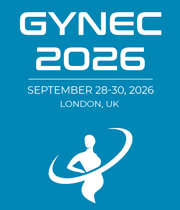Title : Application of thread technology in aesthetic and functional gynecology
Abstract:
The integration of thread technology into gynecological practice represents a significant advancement in both aesthetic and functional treatment modalities. Originally utilized in dermatology for facial rejuvenation, absorbable threads such as polydioxanone (PDO), poly-L-lactic acid (PLLA), and polycaprolactone (PCL) are now being employed in gynecology to improve the appearance, tone, and structural integrity of the vulvovaginal region. In aesthetic gynecology, thread lifting procedures address concerns such as labial sagging, volume loss, and skin laxity. The threads stimulate neocollagenesis and elastin production, leading to progressive tightening and rejuvenation of the treated tissues. This offers a minimally invasive alternative to traditional surgical procedures, with reduced downtime and high patient satisfaction.
In functional gynecology, thread technology is being explored as a supportive treatment for vaginal laxity, mild pelvic organ prolapse, and stress urinary incontinence. By improving tissue tension and increasing fibroblast activity, threads enhance pelvic floor support and vaginal wall strength. This is especially beneficial for postpartum and perimenopausal women seeking non-surgical options. Clinical studies and anecdotal evidence suggest improvements in sexual function, urinary control, and overall quality of life following thread-based interventions.
The advantages of thread-based treatments include minimal invasiveness, lower risk of complications, and relatively quick recovery. However, outcomes can vary depending on the type of thread used, the technique employed, and patient-specific factors. As such, proper patient selection, training, and adherence to safety protocols are essential for optimal results.
With growing demand for intimate wellness and non-surgical solutions, thread technology offers a promising adjunct or alternative to conventional treatments in gynecology. Continued research and long-term clinical data are needed to further establish its efficacy, safety, and standardize protocols across diverse patient populations.




